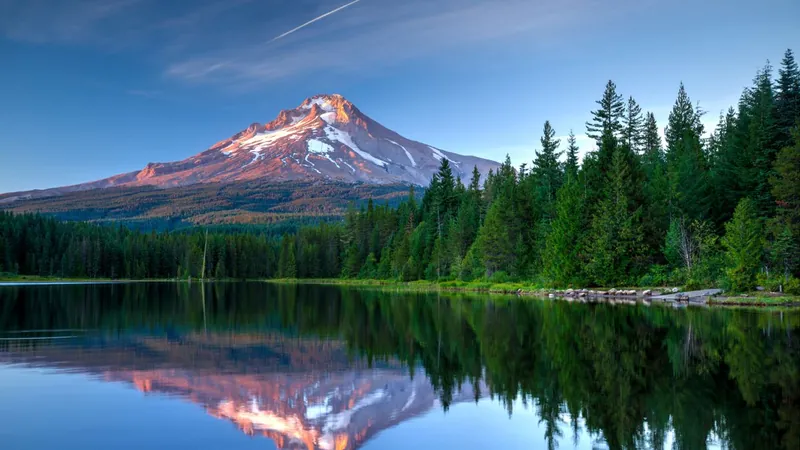
Major Discovery: Enormous Underground Aquifer Found in Oregon Cascades – More Water than Lake Mead!
2025-01-15
Author: Lok
Major Discovery: Enormous Underground Aquifer Found in Oregon Cascades – More Water than Lake Mead!
A groundbreaking study has revealed a colossal reservoir of groundwater hidden beneath the Oregon Cascades, containing more than double the amount of water found in Lake Mead. This astonishing discovery could revolutionize our understanding of water resources and volcanic activity in the area.
Researchers estimate that the underground aquifer holds at least 19.4 cubic miles (81 cubic kilometers) of water, a staggering volume that positions it as one of the most significant water sources in the region. "It's like a continental-scale lake that's stored in the mountainous rocks, functioning as a vast water tower," stated co-author Leif Karlstrom, an Earth scientist at the University of Oregon. He emphasized that the presence of similar large aquifers near the Columbia Gorge and Mount Shasta suggests that the Cascade Range may house the largest volcanic aquifer in the world.
Stretching approximately 700 miles (1,100 kilometers) from Northern California to British Columbia, Canada, the Cascade mountain range has been formed through extensive volcanic activity over millions of years. Within Oregon, two primary regions stand out: the High Cascades, home to ongoing volcanic processes over the last 8 million years, and the Western Cascades, characterized by ancient volcanic rocks that date back 45 million years. The research team utilized the transition between these two geological areas to better understand the evolution of volcanic activity and water movement in the landscape.
The study, which was published on January 13 in the journal PNAS, involved measuring temperature variations in the rocks at varying depths. Typically, deeper rock layers are hotter due to pressure and proximity to the Earth's interior. However, the researchers discovered areas within the mountain range where rock temperatures remained surprisingly stable, suggesting that water was penetrating these layers and acting as a cooling agent.
Initial motivations for the research focused on understanding the Cascades’ landscape changes and water flow dynamics. Nonetheless, the study unveiled vital insights about the significant volume of active water storage in the mountain range and its potential link to volcanic hazards. The interaction between infiltrating water and magma may lead to explosive volcanic eruptions when water turns into steam, escalating pressure underground.
This immense aquifer could become a crucial resource for human consumption, especially as global climate changes challenge existing water supplies. However, researchers emphasize the need for further studies to address how drought and climate variability might impact this newly discovered reservoir.
"The geological findings in this region are like a gift, but we are only scratching the surface of our understanding," remarked co-author Gordon Grant, a hydrologist with the U.S. Forest Service. With environmental challenges ahead, vital questions loom over the aquifer's future: "What will happen if we experience a prolonged period with little to no snow or rain? These are the pressing matters we need to investigate."
As the exploration into the depths of the Oregon Cascades continues, this discovery underscores both the wealth of resources nature can provide and the challenges we must navigate in a changing world.




 Brasil (PT)
Brasil (PT)
 Canada (EN)
Canada (EN)
 Chile (ES)
Chile (ES)
 Česko (CS)
Česko (CS)
 대한민국 (KO)
대한민국 (KO)
 España (ES)
España (ES)
 France (FR)
France (FR)
 Hong Kong (EN)
Hong Kong (EN)
 Italia (IT)
Italia (IT)
 日本 (JA)
日本 (JA)
 Magyarország (HU)
Magyarország (HU)
 Norge (NO)
Norge (NO)
 Polska (PL)
Polska (PL)
 Schweiz (DE)
Schweiz (DE)
 Singapore (EN)
Singapore (EN)
 Sverige (SV)
Sverige (SV)
 Suomi (FI)
Suomi (FI)
 Türkiye (TR)
Türkiye (TR)
 الإمارات العربية المتحدة (AR)
الإمارات العربية المتحدة (AR)